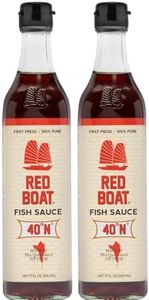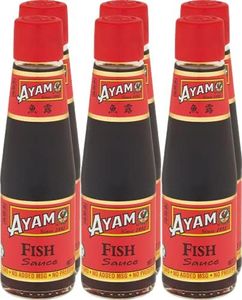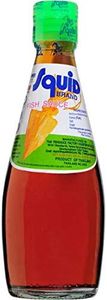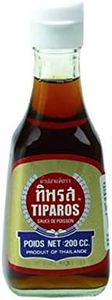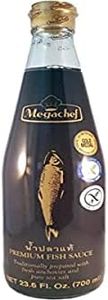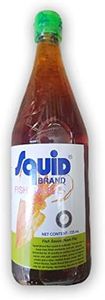We Use CookiesWe use cookies to enhance the security, performance,
functionality and for analytical and promotional activities. By continuing to browse this site you
are agreeing to our privacy policy
10 Best Fish Sauces
From leading brands and best sellers available on the web.Buying Guide for the Best Fish Sauces
Choosing the right fish sauce is all about finding the perfect balance of saltiness, umami, and depth of flavor that suits your cooking and taste preferences. Fish sauce is a staple in many Asian cuisines, adding complexity and savoriness to everything from dipping sauces to stir-fries. When shopping, knowing what to look for on the label helps you avoid bland, overly salty, or chemically flavored options and ensures you get a fish sauce that elevates your dishes.IngredientsFish sauce is traditionally made with just fish (often anchovies) and salt. This is important because simple, high-quality ingredients usually result in a purer, more flavorful sauce. When checking the label, beware of added preservatives, flavor enhancers, or sugars unless you’re specifically looking for those qualities. For pure, authentic flavor, look for short ingredient lists. If you prefer a milder or sweeter profile, you may want to try options that include added sugars or other ingredients, but for most traditional recipes, simplicity is preferred.
Protein ContentProtein content on the label is a good indicator of how much real fish extract is used in the sauce, and it often correlates to a richer, more umami-heavy flavor. Fish sauces with low protein content tend to be saltier and less flavorful, while higher protein values suggest a more concentrated and full-bodied product. You might see this measured as grams of protein per 100ml. For those who want maximum depth of flavor for dipping sauces, marinades, or finishing touches, choose higher protein content; for blending into large quantities of food, a moderate level might suffice.
Salt LevelFish sauce is naturally salty, but the amount can vary. Salt level affects both taste and how you use it in recipes. If you’re salt-sensitive or want more control over seasoning, look for sauces labeled as 'lower sodium' or check the nutrition information for sodium per serving. Traditional full-salt fish sauces pack a punch and are great for authentic flavor, but if you’re adding large amounts or are concerned about dietary salt, opt for one with reduced sodium.
Color and ClarityThe color of fish sauce can range from pale amber to deep brown, and its clarity from crystal-clear to cloudy. Clearer, lighter sauces are usually the result of longer, cleaner fermentation and are prized for a cleaner, less fishy flavor—ideal for delicate dipping sauces or salad dressings. Darker, cloudier sauces tend to have a stronger, more robust taste, which some prefer for cooking. Think about your preferences and intended use: lighter for freshness and subtlety, darker for bolder flavor.
Fermentation TimeFermentation is what develops the complex flavors in fish sauce. Labels may mention long fermentation times or traditional aging processes—these often mean a smoother, less harsh, and richer taste. Shorter fermentation or industrially produced sauces might taste less robust or more chemical. If you prize deep, mature flavor for finishing dishes, seek out longer-fermented options, while those cooking with strong spices may find shorter-fermented types sufficient.
Origin and StyleFish sauce comes from various countries, each with its own style—Thai, Vietnamese, Filipino, and more. These regional differences impact saltiness, sweetness, and overall flavor profile. Vietnamese fish sauces are often lighter and more aromatic, while Thai varieties can be stronger and saltier. If you’re making a specific regional dish, consider matching the sauce to the cuisine; if you’re experimenting or looking for all-purpose use, try tastes from different styles to see what you like best.
